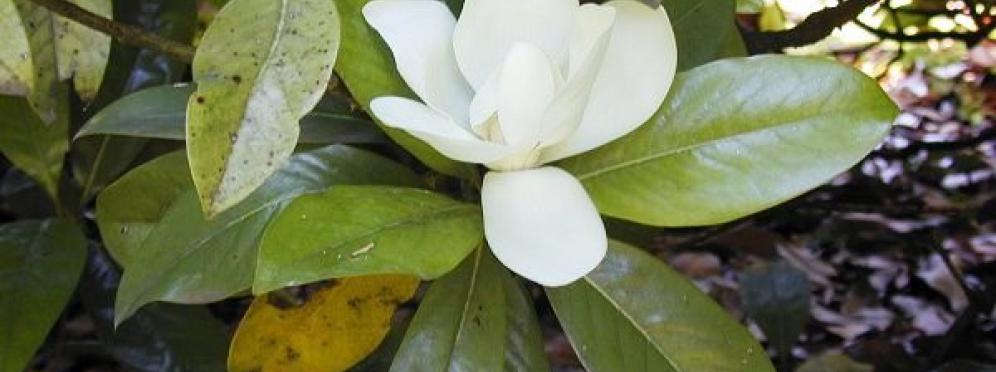Southern magnolia
This tree-like plant with evergreen leaves (it is also called "evergreen magnolia") is native to the southern United States, from Florida to Texas.

This tree-like plant with evergreen leaves (it is also called "evergreen magnolia") is native to the southern United States, from Florida to Texas. It may be 20-30 metres high. In Italy, it is generally grown in parks, public and private gardens, and is appreciated for its cone-like shape and its large, dark green leaves, which are glossy on the upperside and rusty-brown on the underside, creating a pleasant colour contrast. In summer, gaudy white, fragrant flowers - which may be 20-25 centimetres wide - bloom on its branch tips.
The ripe seeds are also very pleasant, as they turn reddish and protrude from the cone-like fruits resembling pinecones. Magnolias love sunny areas and deep, fertile, permeable soil, but suffer in stagnant water or prolonged aridity. However, they can tolerate short periods of frost. The oldest specimen of Magnolia grandiflora in the Botanical Garden dates back to 1786 and is considered to be one of the earliest, if not the first, introduced into Italy. It grows in the quarter bearing the same name, between the west and south gates. It is not very large, but the base of its trunk is well-developed and it has large roots. Near the entrance to the Garden are two other large magnolias, planted in the early 1800s. Affected by fungi, they are currently being treated and are constantly monitored.






